By 31 January 2027, the U.K. will switch off the PSTN, forcing every remaining landline onto IP. That deadline sums up the global direction: cloud calling at internet scale. Microsoft already reports 20+ million Teams Phone PSTN users, and Zoom Phone passed 7 million paid seats, both ecosystems built around SIP.
So the question isn’t academic. When you modernize a telecom stack or leave on-prem gear behind, your choice of signaling protocol determines how calls set up, how media flows, how you secure traffic, and which platforms you can use. SIP grew up on the web and powers today’s UCaaS, CPaaS, and WebRTC apps. H.323 came from the ITU for enterprise video in the 90s and still anchors specialized, tightly controlled environments. Picking one, or planning a hybrid, changes cost, risk, and the pace of rollout.
In the article below, we’ll spell out why VoIP protocols still matter in 2025, and how protocol decisions surface during cloud migrations and hybrid deployments.
Key Takeaways
- SIP is the dominant VoIP protocol in 2025, powering over 70% of enterprise UCaaS, CPaaS, and cloud PBX deployments, expected to reach 90%+ by 2026.
- SIP offers cloud-first scalability, easy integration with Microsoft Teams, Zoom, WebRTC, and global SIP trunking, ideal for distributed, mobile, or hybrid teams.
- H.323 remains relevant in compliance-heavy sectors like defense and healthcare due to its stability and deterministic media control in closed networks.
- SIP’s web-native, text-based architecture supports modern codecs (Opus, G.722), flexible encryption (TLS/SRTP), and rapid integration, but needs SBCs for security.
- H.323 uses a binary, layered architecture and excels in fixed, hardware-bound video deployments, but lacks flexibility, vendor neutrality, and cloud compatibility.
- Enterprises can run hybrid environments using gateways, but long-term cost and interoperability trends favor a full transition to SIP.
- If your roadmap includes UCaaS, remote work, or cloud telephony, SIP is the strategic protocol to future-proof your communications stack.
Why VoIP Protocols Still Matter in 2025
Enterprises rarely think about signaling until something breaks. Yet protocol choice underpins every call’s reliability, scalability, and security.
- Call quality. Poorly matched protocols often show up as jitter, one-way audio, or long call setup times. SIP’s packet handling is designed for variable networks, while H.323’s rigid signaling can choke in mobile or hybrid environments. The result: protocol fit directly determines whether voice and video remain clear at scale.
- Scalability. Cloud platforms, Microsoft Teams, Zoom Phone, RingCentral, standardize on SIP for a reason. Its lightweight, text-based design extends easily across multi-region deployments. In contrast, H.323 was built for static, on-premise conferencing, and scaling it into cloud UC ecosystems requires heavy gateways and higher cost.
- Security and compliance. Regulatory standards like HIPAA and GDPR don’t just require encryption; they demand auditable control over signaling and media flows. SIP integrates with modern session border controllers (SBCs) to enforce encryption, intrusion detection, and lawful intercept policies. H.323 environments can be hardened but usually demand custom hardware and niche expertise.
- Cloud migrations expose the gaps. A global retailer rolling out Teams and Zoom quickly finds SIP trunks essential for PSTN access across regions. In contrast, a defense contractor running secure telepresence rooms may stay on H.323 to guarantee deterministic performance and vendor-locked compliance. Both approaches are rational, but they highlight why protocol choice remains a board-level concern rather than a back-office detail.
Deep Dive into SIP (Session Initiation Protocol)
SIP was designed as a text-based protocol aligned with the internet’s DNA, similar in structure to HTTP and SMTP. That makes it lightweight, human-readable, and adaptable to fast-moving digital ecosystems.
Where SIP dominates. It’s the signaling layer behind cloud PBX platforms, CPaaS providers, and UCaaS giants like Microsoft Teams and Zoom Phone. It also powers WebRTC applications, enabling real-time communications directly in browsers and mobile apps.
Strengths.
- Interoperability – SIP connects disparate systems, from legacy PBXs to cutting-edge APIs.
- Scalability – because it’s modular and text-based, vendors can rapidly extend SIP to cover new codecs, media types, or integration hooks.
- Support – every major carrier and cloud vendor now provides SIP trunks, creating a robust global ecosystem.
Challenges.
- SIP isn’t flawless – NAT traversal creates session reliability issues without proper configuration. Its openness makes it a target for DDoS attacks or toll fraud, requiring SBCs or hosted firewalls. Enterprises often discover these risks when expanding internationally or exposing services to the public internet.
- Adoption at scale – by 2023, more than 70% of enterprises had migrated from PRI lines to SIP trunks for voice connectivity, a share expected to reach over 90% by 2026 as legacy services sunset globally.
Together, SIP’s web-friendly design and wide adoption make it the default signaling choice for cloud-first communications, while also introducing new operational challenges that demand proactive security and governance.
Deep Dive into H.323 Protocol
H.323 was standardized by the ITU-T in 1996, at a time when enterprise-grade video conferencing was exploding. Before broadband and cloud PBXs, global businesses needed a protocol that guaranteed predictable signaling and high-quality media across managed networks. H.323 delivered that consistency and became the backbone of enterprise video deployments throughout the late 1990s and early 2000s.
The protocol is modular, with distinct layers:
- H.225 handles call signaling and registration.
- H.245 manages session control, such as capability exchange.
- RTP carries the actual media streams.
This structure gave vendors fine-grained control over conferencing sessions, but it also introduced complexity that required specialist expertise.
Strengths.
H.323 earned its reputation in mission-critical environments. Defense agencies, global banks, and healthcare providers relied on it for reliability and deterministic performance. Once implemented, it offered stability and secure media flows with minimal tolerance for packet loss.
Weaknesses.
Its rigidity became a liability as cloud communications evolved. Vendor lock-in often forced enterprises into expensive hardware refreshes. Its binary-based design slowed interoperability, and its heavy stack made integration into modern UC platforms difficult.
Where it still thrives. Highly regulated industries continue to value H.323’s predictability. Defense contractors prefer its closed, hardware-bound deployments. Hospitals running telepresence suites in controlled networks also keep H.323 because compliance outweighs the cost of modernization. But beyond those niches, the industry trend is firmly toward SIP.
Technical & Functional Differences That Matter
The real question for enterprises isn’t abstract protocol theory, it’s where SIP and H.323 diverge in real-world rollouts.
Architecture & Complexity
SIP’s text-based foundation mirrors web protocols, so developers and integrators find it straightforward to deploy. H.323 relies on a binary structure and multiple layers, which makes configuration and troubleshooting more specialized and time-consuming.
Call Setup & Signaling
SIP offers flexible signaling paths that speed up call setup, even across variable networks. H.323 enforces stricter signaling sequences, which may delay setup and complicate compatibility between vendors. For global teams using mixed platforms, those differences can be the deciding factor.
Media Handling & Codec Support
Both protocols rely on RTP for media transport, but SIP supports a broader set of codecs and modern encryption suites. That flexibility matters for mobile users switching between networks or for enterprises optimizing bandwidth. H.323, while reliable, is less adaptable when newer codecs or encryption standards enter the market.
Integration & Ecosystem Fit
SIP aligns seamlessly with cloud-native ecosystems: UCaaS platforms, CPaaS providers, and browser-based WebRTC. In contrast, H.323 remains anchored to proprietary conferencing hardware and dedicated video rooms. In hybrid environments, enterprises often need gateways or SBCs to make the two protocols interoperate, which adds both cost and operational overhead.
The bottom line: SIP accelerates integration into modern collaboration stacks, while H.323 sustains older, specialized deployments where predictability trumps agility.
Pros & Cons at a Strategic Level
Once the technical differences are clear, the next step is weighing what each protocol means at the business level. Strategic trade-offs often dictate the right choice more than packet structure or codec support.
SIP Advantages & Drawbacks
Advantages:
- Scalability. SIP easily grows with cloud-native infrastructures, making it ideal for distributed workforces.
- Vendor neutrality. Enterprises aren’t locked into a single hardware stack, which keeps migration costs lower and options open.
- Cloud-first alignment. Because it’s the default for UCaaS and CPaaS, SIP ensures access to the latest collaboration tools.
Drawbacks:
- Security exposure. SIP endpoints and trunks are frequent targets for toll fraud and DDoS attacks. Without SBCs, encryption, and strong monitoring, deployments can create serious vulnerabilities.
- Operational overhead. Managing SIP security and interoperability across multiple vendors requires careful planning and ongoing investment.
H.323 Advantages & Drawbacks
Advantages:
- Stability. Once deployed, H.323 delivers consistent, predictable performance for dedicated conferencing.
- Reliability in controlled environments. Enterprises running secure rooms and regulated setups continue to trust it for mission-critical sessions.
Drawbacks:
- Declining support. Vendor updates and hardware refresh cycles are shrinking, making future investments riskier.
- High maintenance costs. Specialized skills, legacy hardware, and limited interoperability drive long-term expenses upward.
Decision Framework: Which Protocol Fits Your Business?
Technical comparisons help, but the final decision hinges on business context. Factors like company size, IT resources, and long-term communication strategy shape which protocol creates the most value.
Business Size & IT Resources
- SMEs: SIP typically wins here. It’s affordable, cloud-native, and doesn’t demand deep telecom expertise to deploy or scale.
- Large enterprises in regulated sectors: H.323 remains viable where predictability, compliance, or closed networks matter more than flexibility.
Use Case & Deployment Model
- SIP: Fits hybrid workforces, UC platforms, and organizations needing mobility across devices and regions. A company rolling out a cloud PBX or Teams integration almost always standardizes on SIP.
- H.323: Works best in fixed conference rooms or industries that can’t tolerate variability, such as healthcare or defense video systems.
Long-Term Viability & Migration Path
- SIP: Adoption keeps climbing, supported by every major UC provider. It’s the clear long-term choice for businesses investing in future-proof communication.
- H.323: Shrinking but not obsolete. Organizations already running it should consider hybrid strategies: gateways that maintain existing infrastructure while enabling gradual SIP adoption. This approach avoids disruption while aligning with the industry’s cloud-first trajectory.
Quick Comparison Table (SIP vs. H.323)
| Feature | SIP (Session Initiation Protocol) | H.323 Protocol |
| Protocol Type | Text-based, aligned with internet standards | Binary-based, layered ITU-T architecture |
| Primary Use | Cloud PBX, UCaaS, CPaaS, WebRTC, SIP trunks | Enterprise-grade video conferencing, telepresence |
| Supported Media | Voice, video, messaging, presence, WebRTC | Voice, video, data, conferencing control |
| Complexity | Lightweight, easier to integrate and troubleshoot | Heavy stack, specialized expertise needed |
| Interoperability | Broad vendor support, flexible integrations | Limited to proprietary systems, gateways required |
| Scalability | Designed for distributed, multi-region deployments | Best suited to fixed deployments in closed networks |
| Vendor Adoption Trend | Growing: Over 70% of enterprises have adopted SIP trunks, expected to surpass 90% by 2026 | Declining: Vendors reducing active support, niche use in regulated industries |
Conclusion: Future-Proofing Your Communications Stack
The comparison makes one theme clear: SIP is the protocol of cloud-first communications. It’s lightweight, scalable, and supported by every major UCaaS and CPaaS provider. Its agility ensures businesses can adapt to hybrid work, multi-device environments, and rapid global expansion.
H.323 still has a role, particularly in industries where regulatory compliance or mission-critical conferencing outweighs the benefits of cloud integration. Its stability in closed networks explains why healthcare and defense agencies continue to rely on it.
The right choice depends on aligning protocol strategy with business objectives. If the roadmap points toward cloud migration, remote work, or global scalability, SIP is the clear investment. If compliance requires tightly controlled on-prem deployments, H.323 may remain viable in the short term, but planning a migration path is essential.
Explore DIDlogic’s SIP trunking and global DID coverage to modernize your communications.
FAQs
How secure are SIP and H.323 — which offers stronger encryption?
Both can encrypt signaling and media, but SIP integrates more easily with modern SBCs and TLS/SRTP standards. H.323 supports encryption but usually relies on hardware-bound implementations.
Can SIP and H.323 systems interoperate in hybrid environments?
Yes. Gateways allow interoperability, but it adds cost and operational overhead. Many enterprises use hybrid models during phased migrations.
Which is better for remote teams and mobile-first workforces?
SIP. Its flexibility, codec support, and cloud alignment make it ideal for distributed and mobile-heavy environments.
How do the protocols compare on bandwidth efficiency?
SIP supports newer codecs like Opus and G.722, which optimize bandwidth use. H.323 handles bandwidth predictably but lacks flexibility with modern codecs.
What are the cost implications of maintaining H.323 vs migrating to SIP?
Maintaining H.323 often requires specialized hardware and skills, which increase costs over time. Migrating to SIP can involve upfront investment but typically reduces long-term expenses through vendor-neutral ecosystems.
Are there industries where H.323 remains non-negotiable?
Yes. Defense, government, and healthcare telepresence systems continue to run H.323 because of compliance requirements and proven reliability.
How do these protocols fit into future UCaaS, WebRTC, and 5G contexts?
SIP is central to UCaaS, CPaaS, and WebRTC, and it’s already optimized for 5G-ready communications. H.323 doesn’t integrate natively with these ecosystems and will remain limited to legacy or regulated deployments.
Further Reading
- What is SIP trunking?
- SIP trunking capacity
- SIP trunking security
- Differences between SIP trunking and cloud PBX
- Differences between SIP trunking and telephony
- Differences between SIP trunking and IP trunking
- SIP session vs SIP trunk
- Differences between SIP Trunking and Session Border Controllers
- SIP Trunking vs PSTN
- Advantages of SIP Trunking
- SIP Trunk Costs
- SIP Trunking Migration Plan
- SIP Trunking Requirements










